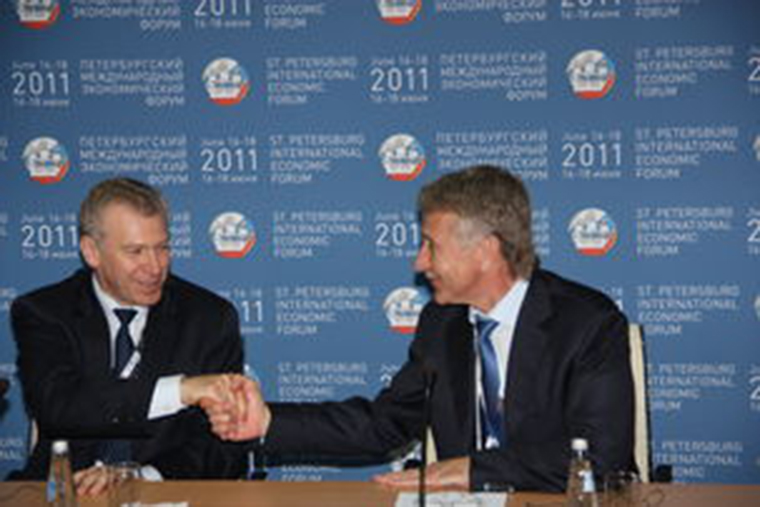Published: June 27, 2011
A Russia PVC plant has set the standard for project finance deals in the country.
Never in the history of Russian manufacturing have so many milestones been achieved in one project. In June the European Bank for Reconstruction and Development (EBRD) partnered with state-owned bank Sberbank in a project finance deal for the first time when it supported the development of Europe’s largest integrated polyvinyl chloride (PVC) plant.
The banks joined a syndicate that committed €750mn to build the plant in the town of Kstovo in the Nizhny Novgorod region of Russia. The organisations each contributed €150mn to the venture, while BNP Paribas, ING and HSBC invested a combined €450mn.
The loans matched the investment made by Russian petrochemical company SIBUR and a subsidiary of Belgian industrials group Solvay, which formed RusVinyl to develop the project.
“We do not believe there is another transaction that has brought together Sberbank, the EBRD and major foreign banks under the same deal,” says Pavel Ananienko, SIBUR’s head of treasury.
But it was not easy to bring the institutions together. Maxim Osintsev, Sberbank’s head of oil and gas coverage, says ECAs and foreign bankers were initially hesitant over the risk in the Russian market. “But when we said we are confident enough to finance the whole transaction alone they decided to go for it,” he adds. “They were pretty comfortable that a big institution like Sberbank was confident in the deal.”
Home run
Other factors make the deal unique. Previous agreements involving foreign banks in Russian projects have been export-orientated deals, but this plant is targeted at the domestic market and does not include an offtake agreement, under which a buyer is contracted to the project.
The site is being built to meet demand for PVC products in Russia from the window, packaging, car production and construction industries.
“This is a transaction of many firsts,” says Marko Gucijan, a director and head of project and export finance at HSBC, when discussing the project’s target market and the absence of an offtake contract. “It is pure Russian market risk.”
To understand this risk the banks carried out evaluations of demand in the domestic market. Mikhail Galtsov, a director at BNP Paribas focusing on corporate and investment banking in Russia, the CIS and Eastern Europe, sent in the bank’s specialists to examine the market. “We took a view that the market is still growing in Russia and we are comfortable on the offtake side,” he says.
Meanwhile, HSBC appointed a consultancy to assess the supply and demand situation in Russia. “This is a very important project for Russia,” says Elvira Rozajac, HSBC’s project finance director. “There is a lot of demand forecast for PVC products and this is an import substitution project for the country. This project is also a low cost competitive producer so there was a good rationale to get involved in the project.”
One of the main highlights for ING was that the plant will replace exports. Its location is also ideal. “It is three and a half hours from Moscow, so will be able to serve customers in the area,” says Rodolphe Olard, ING’s managing director.
Safe from harm
The loans backing the project are guaranteed by COFACE and ONDD, the export credit agencies (ECAs) of France and Belgium, which is another first for the deal.
Olard explains that this is the first time ECAs have been involved in a project financing in Russia. “That is significant,” he says. “It is quite unique in that it is the first time ECAs have guaranteed to cover commercial lenders against political risk and commercial risk events in Russia.”
Political risk can be a concern for many banks committing funds to such a high-profile project, but not for Galtsov, who drew confidence from the organisations the bank has partnered with on the deal.
“On one side you have Russia’s largest state-owned bank, and then you have the EBRD, which provides a certain political umbrella,” he says. “The deal also has the cover of export credit agencies.”
The project was given priority status by the Nizhny Novgorod regional government and is part of the Ministry of Industry and Trade’s petrochemical development plan.
“Making sure that the project is a priority status ensues to the banks a certain level of confidence that the state would continue supporting the project going forward,” says Ananienko.
Issues regarding political interference and the lack of an offtake agreement have subsided and the finance is already being put into action with construction having commenced.
When the plant is completed in 2013 it will have the capacity to produce 330 kilotons of PVC and 235 kilotons of caustic soda each year using technology licensed from SolVin, which is part-owned by Solvay and BASF.


